Circular Economy in the Spotlight: Driving Sustainability Forward
 Share
Share
 Copy Url
Copy Url
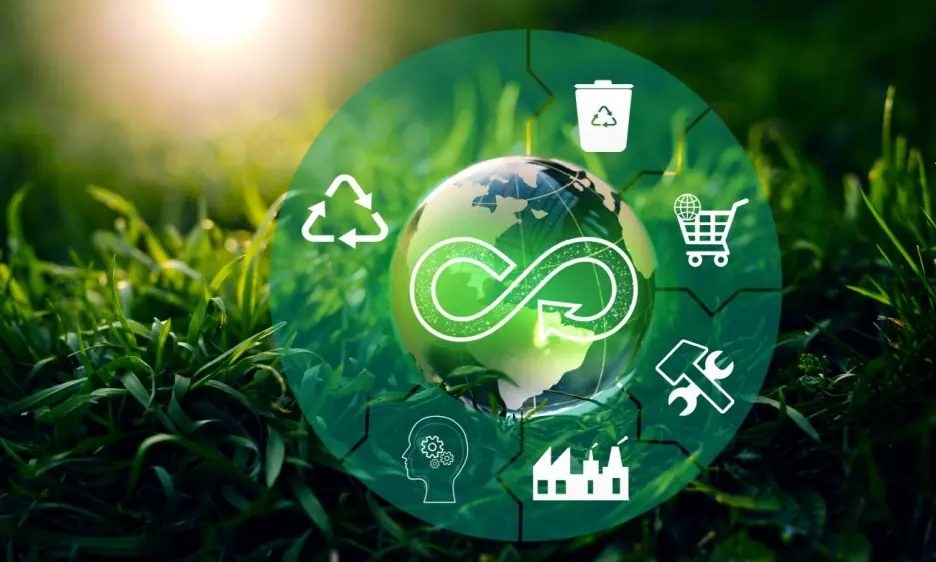
The circular economy is more than just a buzzword. it's a transformative approach that aims to tackle waste and pollution while reimagining the traditional linear economy. In a world grappling with climate change, this innovative business model shifts away from the "take, make, dispose" mindset. Instead, it promotes reuse, recycling, and regeneration, making sustainability more than just a goal. But which practice supports a circular economy? It’s about redesigning products and processes to reduce waste and extend the life cycle of materials. As we explore this new circular economy action plan, we’ll see how these principles can benefit both businesses and the environment.
But why is this shift so crucial? The circular economy offers a way to combat the pressing issues of waste and pollution by closing the loop in production and consumption. This model not only conserves resources but also paves the way for a more resilient economy. As industries adopt these principles, they create a sustainable path that addresses today's environmental challenges while ensuring long-term profitability. In the following sections, we'll delve into the circular economy's principles, stages, industry applications, and how it connects to sustainability. Stay with us as we explore the rise of circular economy developments around the world and much more.

What is a Circular Economy?
A circular economy is a new way of thinking about how we use resources and deal with waste. In the traditional linear economy, we take raw materials, make products, use them, and then throw them away. But in a circular economy, we try to keep things in use for as long as possible. This helps reduce waste and pollution. The main idea is to design products so they don’t create waste, which is good for both the environment and businesses.
This model tackles big issues like running out of resources, harming the environment, and climate change. It pushes companies to rethink their business models by focusing on making products last longer, reusing, and recycling. This helps businesses rely less on raw materials and improve their waste management. It’s also good for business sustainability because it can cut costs, spark new ideas, and boost their reputation. The circular economy isn’t just a concept; it’s already happening around the world, supported by plans like the European Union’s Circular Economy Action Plan, which helps make products more sustainable and reduces waste in various industries.
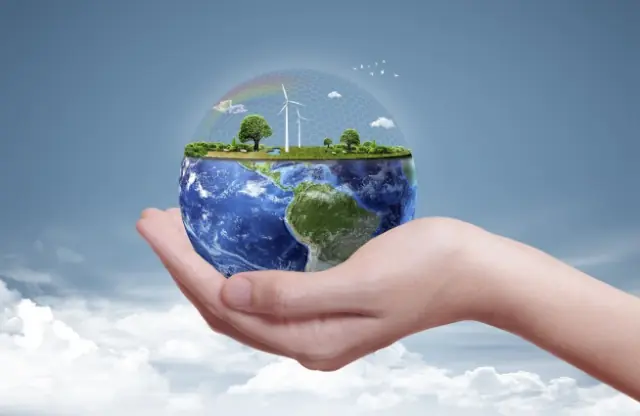
Key Principles of a Circular Economy
The circular economy relies on a few key principles that guide its use and bring about its benefits. Unlike the traditional linear economy, which is often seen as unsustainable, the circular model focuses on creating a system that can repair and regenerate itself. Businesses and governments are working to fight climate change and promote sustainable growth. So understanding these principles is crucial. These ideas guide businesses in adopting more sustainable practices and align well with global standards like the Corporate Sustainability Reporting Directive (CSRD) and the Task Force on Climate-related Disclosures (TCFD).
1. Design Out Waste and Pollution
In a circular economy, the goal is to cut down on waste and pollution right from the start. Instead of dealing with waste after production, this approach encourages designing products and processes that naturally create less waste. It also addresses greenwashing by making sure that products are truly sustainable, not just marketed as such. This helps businesses use finite resources more efficiently and reduce their environmental impact.
2. Keep Products and Materials in Use
A major focus in the circular economy is to keep products and materials in use for as long as possible. This means rethinking the business model to emphasize reusing, repairing, refurbishing, and recycling. The circular economy provides a way to extend the life of products, lowering the need for new resources and cutting down on waste. This principle also supports sustainability reporting by offering clear data on how resources are used.
3. Regenerate Natural Systems
The circular economy doesn't just aim to reduce harm; it also seeks to actively improve the environment. This involves restoring and enhancing natural ecosystems through methods like composting, regenerative farming, and sustainable sourcing. The constant evolution of the Corporate Sustainability Reporting Directive encourages businesses to adopt practices that restore the environment. This makes their operations more sustainable and resilient over time.
These principles are the foundation of the circular economy. They offer a strong approach to sustainable development. In the next sections, we’ll explore how these principles are applied across industries and their connection to global sustainability efforts.
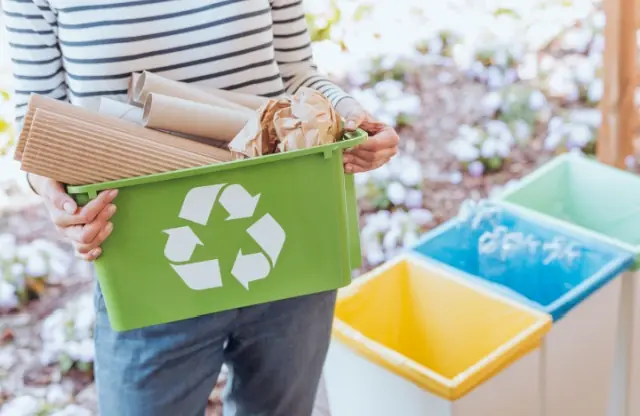
What are the Stages of a Circular Economy?
The circular economy unfolds through several key stages. These stages guide the process of turning resources into products and then reintegrating them back into the economy. Understanding each one is vital for implementing sustainable practices. Especially in the face of challenges like climate change and the depletion of finite resources. These stages not only help reduce greenhouse gas emissions but also promote circular development by ensuring that materials are reused, refurbished, or recycled instead of being discarded.
1. Design and Production
In the first stage, products are designed with the circular economy in mind. This means creating items that are durable, easy to repair, and made from recyclable materials. The goal is to reduce waste from the very start. This approach also ensures that products can be easily disassembled for recycling, minimizing the impact on the environment and aligning with sustainability reporting frameworks.
2. Consumption and Use
The second stage focuses on extending the life of products. Consumers are encouraged to reuse, repair, and refurbish items rather than discard them. This stage is crucial in reducing greenhouse gas emissions and waste. It also promotes a mindset shift towards valuing products for their longevity, thus supporting circular development.
3. Collection and Recycling
When products reach the end of their useful life, they enter the collection and recycling stage. Materials are collected, sorted, and processed to be used in new products. Recycling is essential for ensuring that valuable materials are not lost, and it helps reduce the need for virgin resources. This stage shows how the circular economy tackles climate change by lowering the demand for new raw materials and cutting down on emissions.
These stages are integral to the circular economy model, each contributing to a more sustainable and resilient system. As we delve further, we’ll explore how these stages are applied across various industries and how they connect to global sustainability efforts.
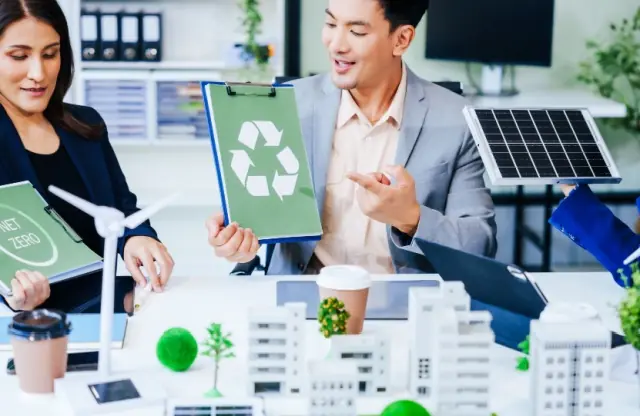
Which Practices Support a Circular Economy?
To support a circular economy, several practices are essential to ensure the efficient use of resources and reduce waste. These practices form the foundation for a successful transition to a circular economy and encourage sustainable growth.
One key practice is designing for longevity. Products should be created to last longer, be easily repaired, and have components that can be reused or recycled. This approach reduces the need for new materials and minimizes waste, which is at the core of the circular economy. By focusing on durability, businesses can ensure that products remain in use for as long as possible, reducing the strain on natural resources.
Another important practice is adopting new business models that align with circular principles. Businesses can extend the lifespan of products by focusing on durability. This reduces the strain on natural resources. The product-as-a-service model offers an example, where customers lease or rent products instead of buying them. This approach shifts the focus from ownership to access. It also encourages companies to design products that are easy to maintain and refurbish.
Resource recovery and recycling are also vital. At the end of a product’s life, materials should be collected, sorted, and processed to be used in new products. This practice not only conserves valuable resources but also reduces the amount of waste sent to landfills.
These new business models are essential for promoting circular development and lowering the environmental impact of production and consumption. Together, these practices support a circular economy by using resources more efficiently, minimizing waste, and prioritizing sustainability at every stage of the product lifecycle.
By adopting these strategies, businesses and governments can drive the transition to a circular economy and build a more sustainable future.
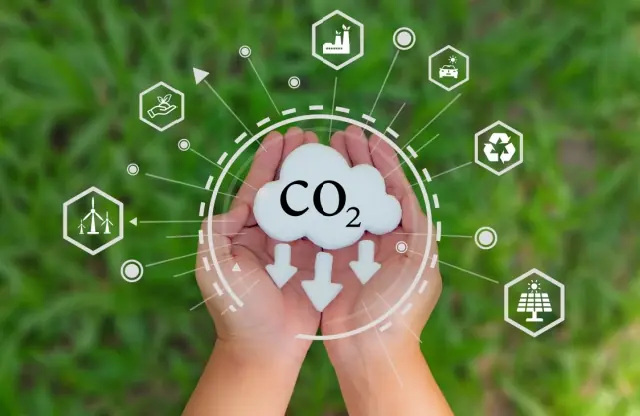
What are the Benefits of a Circular Economy?
The circular economy offers a wide range of benefits that go beyond environmental gains. It also has a significant impact on economic and social dimensions. Here are some key advantages:
1. Reduction in Waste and Pollution
The circular economy greatly reduces waste by keeping products and materials in use for as long as possible. By using closed-loop processes in which waste is repurposed, the model lowers the need for new raw materials. This minimizes environmental damage and helps conserve finite resources, supporting a more sustainable economy.
2. Lower Greenhouse Gas Emissions
Shifting to a circular economy can lead to a large decrease in greenhouse gas emissions. By focusing on recycling, reusing, and refurbishing, it reduces the need for energy-intensive production of new materials. This transition to a circular economy is crucial in the fight against climate change.
3. Economic Growth and Job Creation
The circular economy promotes the creation of new business models that generate jobs in recycling, refurbishment, and remanufacturing. By using waste as a resource, it opens up new economic opportunities, driving innovation and growth, especially in industries aiming to reduce their environmental impact.
4. Increased Business Resilience
By lessening reliance on virgin materials, businesses that adopt circular practices can better handle market fluctuations and supply chain disruptions. This approach increases resilience and provides a competitive edge over those still dependent on the current linear economy.
These benefits collectively contribute to a more sustainable economy and a future that is more resilient, inclusive, and environmentally friendly.

Adoption and Applications by Industry
The circular economy is being adopted by many industries as they find new ways to shift from a linear to a circular model. This change not only helps the environment but also supports a sustainable economy by creating circular products and boosting economic activity while reducing waste. Here’s how different sectors are making this shift:
Construction Industry
The construction industry uses a lot of resources and produces significant waste. Transitioning to a circular economy in this sector involves reusing materials. It also requires designing buildings that can be easily taken apart. Additionally, it focuses on recycling construction waste into new materials. These practices save resources and open up new market opportunities. Both of these support a vision of an economy that values sustainability.
Textile Industry
The textile industry is resource-heavy and generates a lot of waste. Embracing a circular economy here involves recycling fabrics, using sustainable materials, and designing clothes to last longer. Brands are also creating circular products like recycled fibers and promoting second-hand markets. These actions help reduce waste and encourage economic activity within a sustainable economy.
Automotive Industry
In the automotive industry, the circular economy focuses on reusing parts, remanufacturing engines, and recycling materials. This approach extends the life of vehicles and reduces the need for new raw materials. As the industry shifts from linear to circular practices, it supports more sustainable economic activities and aligns with global efforts to cut emissions.
Agriculture
Agriculture can benefit from the circular economy by turning organic waste into fertilizers, reducing resource use, and improving soil health. Practices like composting and regenerative farming help close the loop, turning waste into valuable resources. This promotes a sustainable economy by using resources more efficiently and reducing environmental impact.
Logistics Industry
The logistics sector is key to the circular economy by optimizing supply chains to cut waste and energy use. This includes businesses returning and reusing products through reverse logistics and using digital tools to boost efficiency. These innovations help shift the industry from linear to circular practices, supporting sustainability across the supply chain.
Oil and Gas Industry
Even in the oil and gas industry, the circular economy is making progress through initiatives like recycling waste products into energy and chemicals. This reduces the need for virgin materials and lessens environmental harm. By adopting circular practices, the industry contributes to a sustainable economy, showing that even resource-intensive sectors can embrace sustainability.
Renewable Energy Industry
The renewable energy sector naturally aligns with the circular economy by using sustainable resources. Recycling and repurposing materials, such as old solar panels and wind turbines, help close the loop in this industry. This not only supports a vision of an economy focused on sustainability but also creates jobs in recycling and refurbishment.
Plastic Waste Management
Plastic waste management is crucial for the circular economy. Innovations in recycling and the creation of circular products, like packaging from recycled plastics, are helping to reduce the environmental impact of plastic waste. This shift is essential for moving from a linear to a circular economy and supports the broader goal of a sustainable economy.
These examples show how different industries are adopting circular economy practices to support sustainability and foster economic growth. By embracing these changes, each sector contributes to a more resilient and sustainable future.
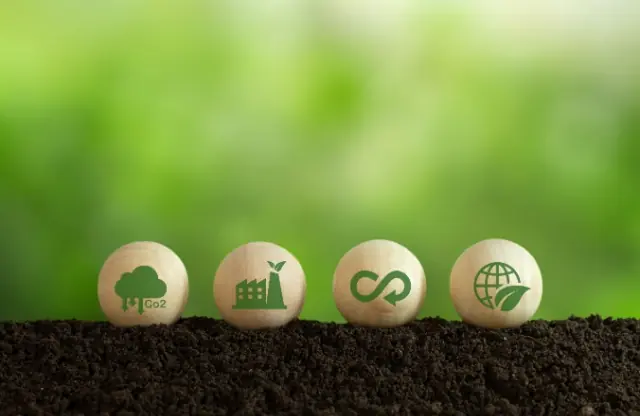
What is the Connection between a Circular Economy and Sustainability?
The connection between a circular economy and sustainability is strong, as both aim to create a greener and more resilient future. A circular economy cuts waste, reuses materials, and promotes recycling. These actions directly support sustainability by reducing the environmental impact of production and consumption. This approach conserves resources and helps reduce greenhouse gas emissions. In India, the government is working on a new circular economy action plan to integrate these principles into its economic growth.
Moving to such an economy is key to reaching global sustainability goals. As part of India's growth on the sustainability development index, the country focuses on using resources efficiently and reducing its ecological footprint. This effort aligns with the global circular economy movement, balancing economic growth with environmental care. By adopting circular practices, India leads in sustainability reporting, demonstrating how a circular approach can achieve long-term sustainability.
India’s commitment is evident in its circular economic action plan, which promotes sustainable practices across industries. This plan encourages companies to redesign products and processes to reduce waste and extend material life. As India continues these strategies, it meets national sustainability goals and contributes to the global fight against climate change.
India’s shift toward a circular economy in its development strategy shows how sustainability can be achieved through resource-efficient practices. This connection between a circular economy and sustainability highlights India's role in building a more sustainable and resilient global economy.
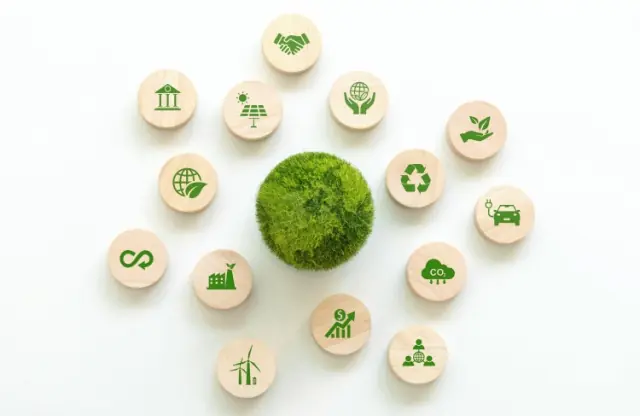
Circular Economy Developments around the World
The circular economy is gaining popularity worldwide as countries and industries seek ways to balance economic growth with environmental care. The Ellen MacArthur Foundation is a major force behind this movement. They have played a key role in promoting circular strategies globally. Their efforts have encouraged businesses and governments to rethink how they design, produce, and use products and services. This shift aims to reduce waste and extend the life of materials.
In Europe, the World Circular Economy Forum 2024 (WCEF2024), held in Brussels, focused on the importance of circular solutions in different sectors. Experts from 168 countries gathered to discuss the latest innovations in circularity. They aimed to find ways to integrate these practices into the value chain of various industries. This global effort hopes to speed up the adoption of circular practices, especially in areas most affected by traditional methods.
The global circular economy movement is also tackling big issues like waste management and pollution. Reports say that using circular practices could greatly reduce municipal solid waste, possibly cutting it in half by 2050. This change would not only lower waste but also help fight climate change by reducing greenhouse gas emissions.
In short, these global efforts show how this type of economy can be a powerful tool for building a sustainable future. As more countries and businesses adopt these practices, the positive impact on the environment, economy, and society will grow.
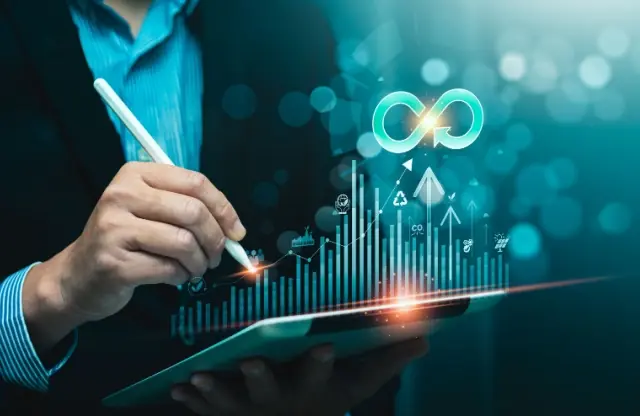
Integrating Circular Economy and Sustainability Reporting with Report Yak’s Expertise
The connection between a circular economy and sustainability is clear. Both work together to create a greener and stronger future. The circular economy helps sustainability by cutting waste, reusing materials, and promoting recycling. This reduces the environmental impact of production and consumption. The Ellen MacArthur Foundation has been a major force in spreading these circular strategies worldwide. They encourage businesses and governments to rethink how they design, make, and use products and services to achieve long-term sustainability. As more countries and industries adopt these practices, they help save resources and greatly reduce greenhouse gas emissions, supporting the global fight against climate change.
If you're looking to communicate your company’s commitment to sustainability through well-designed reports, Report Yak is the best choice. As India’s leading report design agency with over two decades of experience, we specialize in designing award-winning sustainability reports, annual reports, and ESG reports. Our work has received accolades at the LACP Spotlight Awards, and you can view our successes on our Clutch profile and Showcase page. For more information, visit our Services page. Reach out to us at 1800 121 5955 (India) or contact@reportyak.com, or connect with us through the Contact form or WhatsApp on our website. Let’s make your sustainability efforts stand out!
Related Posts
-
How To Adopt BRSR Guidelines For Success
Oct 15, 2025Share
Copy Url
Simplifying ESG Disclosure for Better Impact
corporate reportingenvironmental and social initiatives
+6
Aug 28, 2025Share
Copy Url
GRI Sustainability Taxonomy: Learn How to Turn Data Into Advantage
corporate governancecorporate reporting
+11
Jul 1, 2025Share
Copy Url


